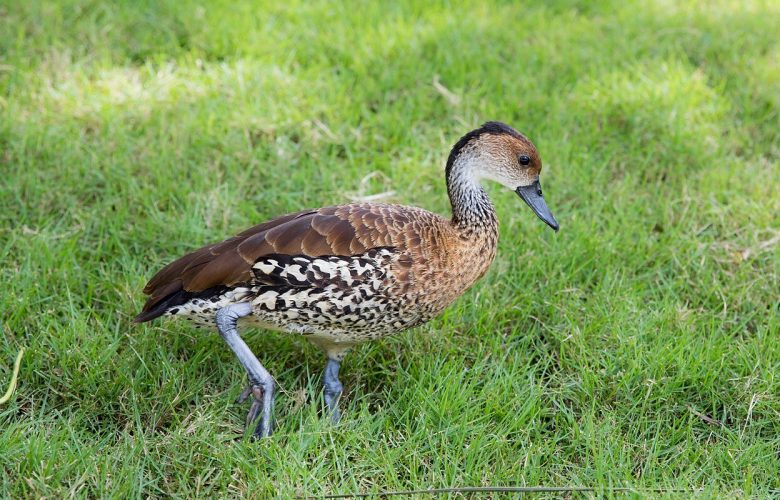Reddish-brown overall, with pale grayish cheeks, throat, and stomach, black bill and thighs, deeply pitted breast and belly, and a striking black-and-white ocellated pattern on the flanks, are the distinct features of the West Indian whistling ducks. The West Indian whistling Duck (Dendrocygna arborea) breeds in the Caribbean and is also known as the black-billed whistling duck or Cuban whistling duck. The Whistling ducks are endemic to the West Indies in countries such as Cuba, the central Bahamas (Andros, Exuma, Long Island, and adjacent islets), Turks & Caicos, the Cayman Islands, Jamaica, Hispaniola, Puerto Rico, Antigua, Barbuda, and Guadeloupe. With a few rare exceptions, whistling ducks are generally uncommon and difficult to find through much of their range. Willie Ebanks' Farm on Grand Cayman, the Royal Palm
Reserve east of Negril, Jamaica, and the National Botanical Garden in Santo Domingo, Dominican Republic, are all good places to see habituated wild birds. Botanic Park (Grand Cayman), Font Hill Nature Preserve (Jamaica), Laguna Cartagena and Boqueron National Wildlife Refuges (Puerto Rico) are other good options. The Caribbean whistling ducks are frequently associated with mangroves, which some populations use for roosting, but it can be found in a wide range of wetland environments, including marshes, rivers, and even seashores (Birdfinding.info).
Photo Source: https://www.jamaicanpetrel.com/birds/west-indian-whistling-duck




